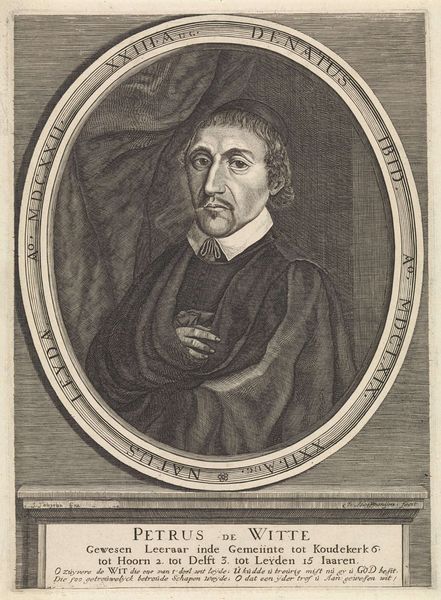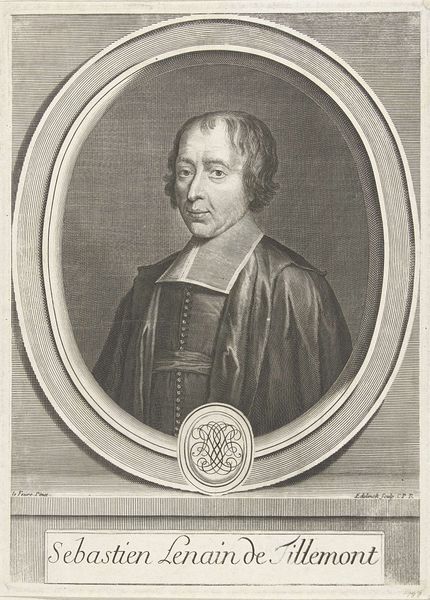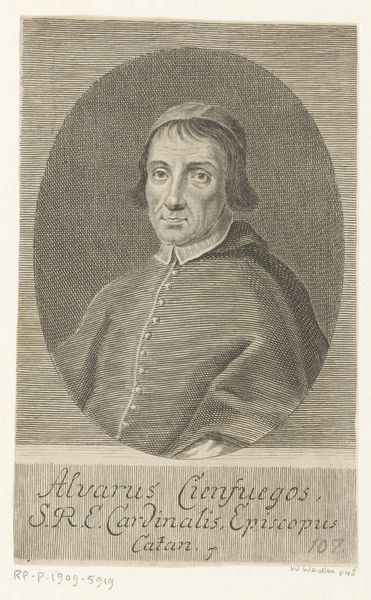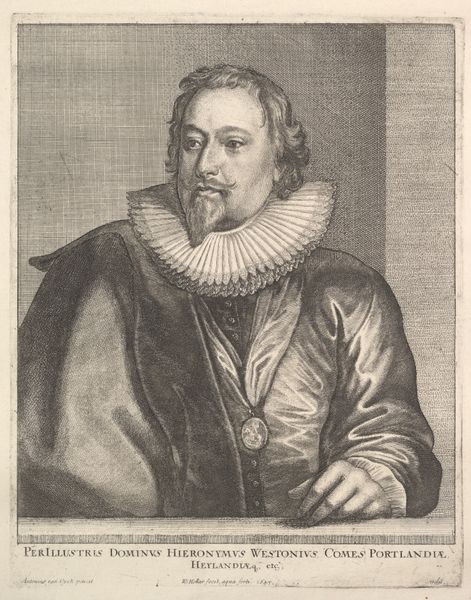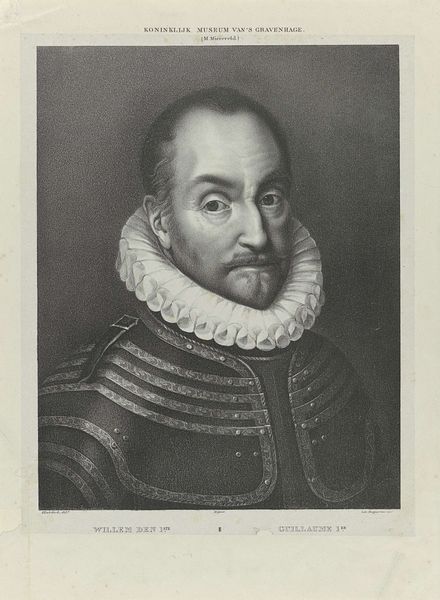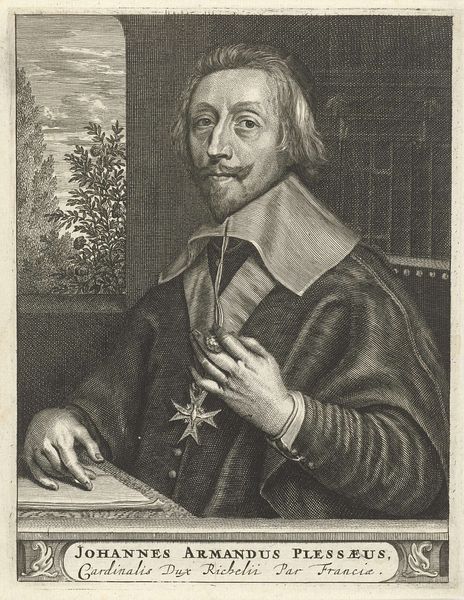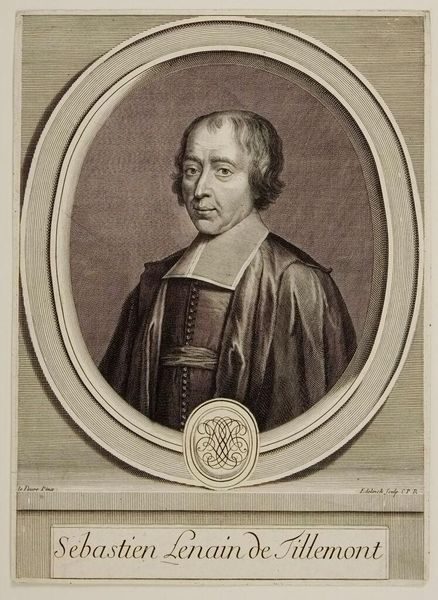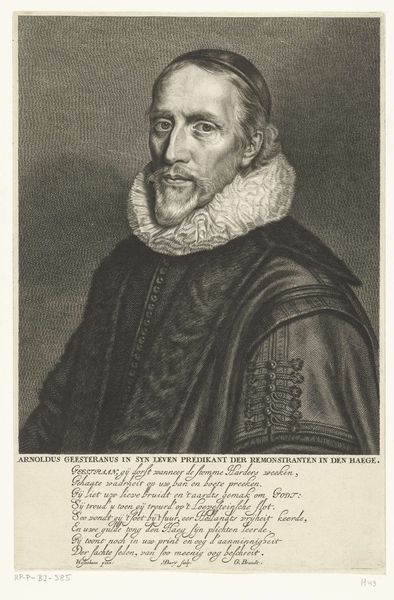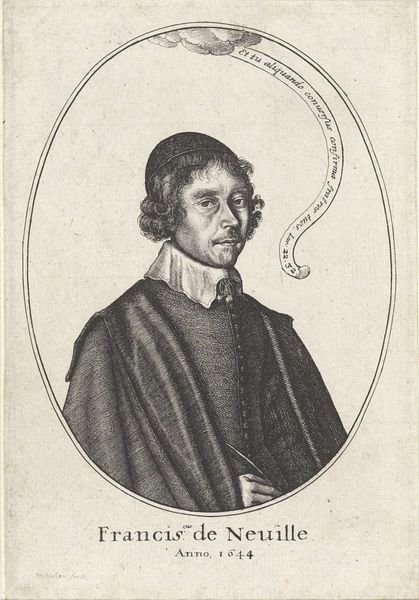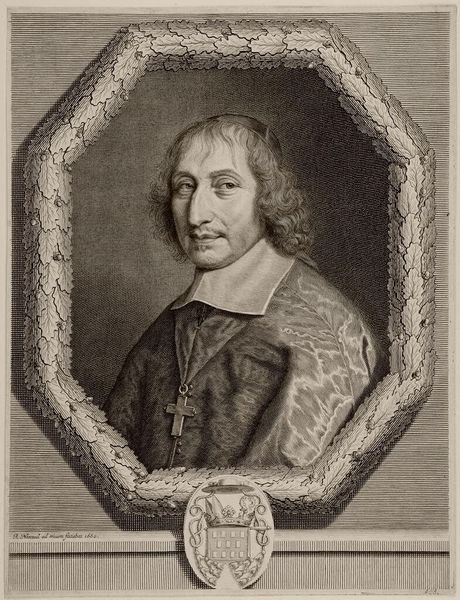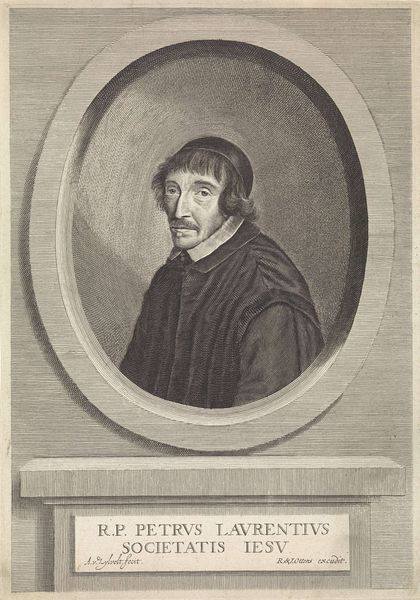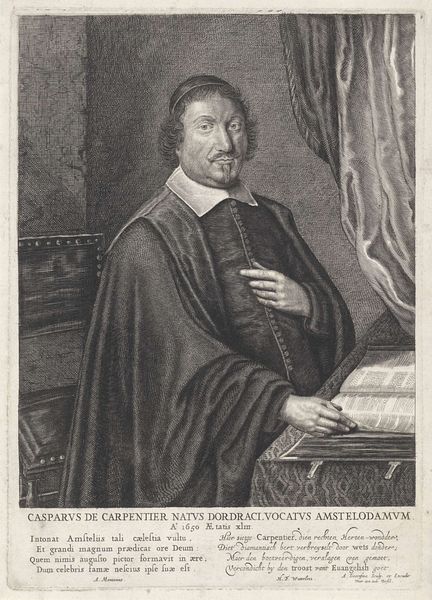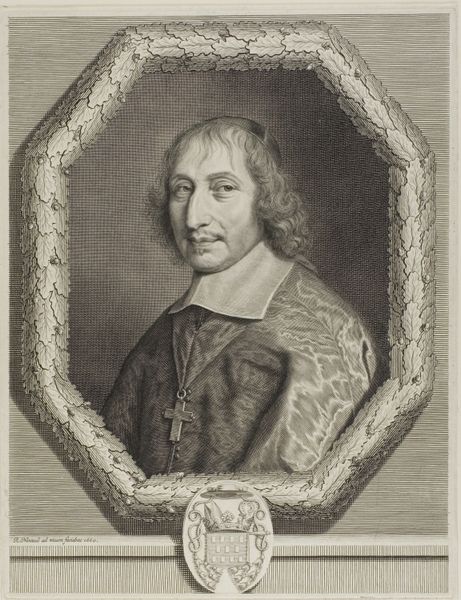
print, engraving
#
portrait
#
baroque
#
dutch-golden-age
# print
#
caricature
#
portrait reference
#
engraving
#
portrait art
Dimensions: height 272 mm, width 181 mm
Copyright: Rijks Museum: Open Domain
Editor: This is a portrait of Pieter de Witte, dating somewhere between 1670 and 1713, created by Pieter Schenk. It's an engraving. I’m struck by the contrast between the finely detailed face and the looser rendering of the robe. How would you approach an analysis of this print? Curator: As a materialist, I'm immediately drawn to the labor involved in producing this image. Consider the engraver, Pieter Schenk: he's not just replicating a likeness, but participating in a complex system of image production and distribution. How do you think the print medium, specifically engraving, affects how we understand the sitter and his social standing? Editor: I hadn't really thought about it that way. I guess the fact that it’s a print implies wider distribution than, say, a unique painted portrait? Was printmaking a craft viewed differently from painting at this time? Curator: Absolutely. We must challenge this traditional boundary between high art and craft to reveal complex hierarchies of labor and materiality that contribute meaning. Was Schenk considered an artist, a craftsman, or perhaps both? How would you interpret this? Editor: Good point. It makes you think about who this portrait was *for*. It probably served a different purpose than a painting. It would likely have had a role to play in civic memory. I hadn’t really thought about the work that goes into the creation of an engraving. Curator: Exactly! By focusing on the process – the act of engraving, the materials used, the intended audience – we move beyond simply identifying the sitter to understanding the print as a product of specific social and economic conditions. Editor: I see. Considering this portrait as a manufactured item gives a new perspective. Thanks! Curator: Indeed. Thinking about the print as a form of early mass production is crucial. Hopefully we can consider the materials of art and question those historical power dynamics.
Comments
No comments
Be the first to comment and join the conversation on the ultimate creative platform.
